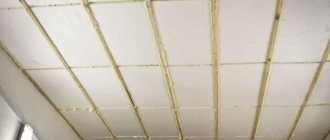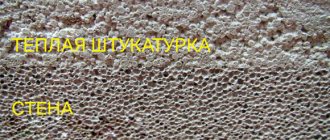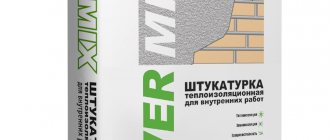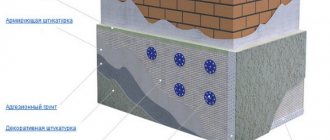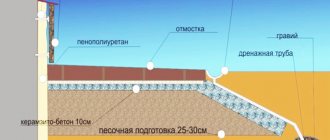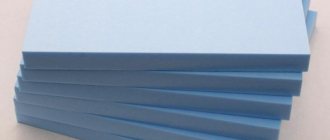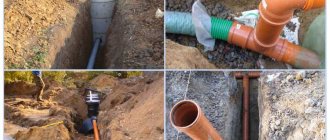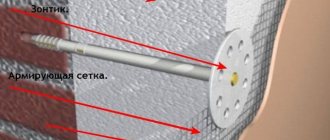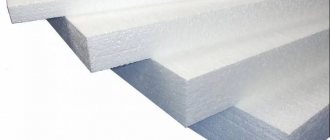How and with what to glue foam to the wall?
Polystyrene foam is simply an irreplaceable material for insulating and soundproofing the walls of a house. Along with an affordable price, polystyrene foam has quite decent characteristics, and its installation on walls, if the correct technology is followed, does not cause absolutely any problems.
Among the main positive properties of polystyrene foam, especially its moisture resistance, light weight, and durability should be noted. It will not be difficult to glue foam plastic to the wall surface for a long time, since today there are various types of adhesives for this purpose. So, how to glue polystyrene foam to a wall, and what is best to use for these purposes, will be discussed in this review of a construction magazine
How to glue extruded polystyrene foam
So, let's look at one of the most important questions. If the manufacturer has not written that you need to glue it exclusively with glue and foam, or that installation needs to be done using silicone or bitumen mastics, cement glue, or liquid nails, then you can install it with the glue or foam you want.
The most popular of them are bitumen adhesive Bitumast, adhesive foam Ceresit, TechnoNIKOL, Tytan.
Today the following mixtures are in wide use:
- Multicomponent, consisting of diluted bitumen in a solvent, but have a bad effect on extruded polystyrene foam, since they are not suitable for this material, since they may contain gasoline, acetone and other substances that have a bad effect on this material, eating through small amounts over time holes. Used only for fastening polystyrene foam boards (not extruded).
- One-component adhesive foams do not contain solvents. Most often they contain polyurethane, which does not corrode the insulating material over time. This mixture is a foam that dries quickly in the open air. It is a universal fastener for any type of insulation. One of the highest quality examples of mounting foams from.
Not every building mixture is suitable for attaching extruded polystyrene foam. You need to look for a universal option and also do not forget to look at the composition, since the content of various solvents in the mixture is unacceptable.
Working with single-part materials
Often in repair work there is a need to glue extruded polystyrene foam and ball or regular foam. For this, the same adhesive components are used, but with certain nuances:
- the glossy surface of polystyrene is treated with a needle-type roller to improve adhesion and glue is applied;
- The foam ball is covered with long-fiber paper.
Otherwise the process is identical to that described above.
VIDEO: Secrets of polyurethane foam - tricky tricks, useful tips
Features of material installation
For insulation and thermal insulation of facades from the outside of the building, as well as rooms from the inside, different types of construction finishing are suitable. The finishing material is polystyrene foam boards, which are available in various parameters, dimensions and thickness. The slabs can be attached to various surfaces, including metal and concrete. For this purpose, special glue for polystyrene foam boards is used.
Note! A suitable adhesive composition for polystyrene foam must have properties that could ensure high-quality adhesion and durability of fastening between materials.
Both domestic and foreign brands are engaged in the production of adhesive for polystyrene foam.
There are special types of adhesive for polystyrene foam: for external use and for internal use.
The choice of a suitable installation adhesive for polystyrene foam insulation should be based on the following important features:
- Ensuring the quality and reliability of adhesion between polystyrene foam and the base, price is not the main indicator in this case.
- Construction adhesive, especially for exterior finishing, must be resistant to temperature changes, precipitation and other environmental factors.
- In terms of composition, the selected adhesive must be environmentally friendly, especially intended for interior decoration. If this feature of the product is not taken into account, then in the future, glue evaporation may negatively affect the health of people who live or are often in the room.
- Convenience and ease of installation and fastening of polystyrene foam boards with glue.
If you look at the products offered by construction stores, not all of them will meet the listed requirements. Therefore, often the installation of thermal insulation boards with the adhesive proposed by experts becomes significantly more complicated.
It is not enough to simply choose a suitable and high-quality composition; you need to take into account the specifics of working with glue for exterior finishing.
If a cement or bitumen mortar is selected, it is applied as a permanent layer over the entire area of the slabs. Before fastening, the base must also be prepared to increase adhesion. Therefore, it is necessary to eliminate any contamination, residues of other substances and materials, and apply a layer of primer.
If foam adhesive is chosen for the work, then it is necessary to apply the composition along the perimeter of the slab and in zigzag lines through the center.
Advice! If excess adhesive appears on the finishing surface, only after complete hardening is it carefully removed. If the chosen solution turns out to be long-drying, then it is better to secure the finish with supports.
Features of foam gluing - what you need to know
Polystyrene foam is able to retain all its positive qualities for 25 years when finishing external walls. If you are going to glue foam plastic to the wall indoors, then it will serve you without losing its performance properties for 50 years. The material copes well with temperature changes, protects the building from mechanical damage and ultraviolet light, does not get wet and has excellent fire resistance. It is for this reason that it is used as an insulating material in almost all rooms, including children's rooms.
Foam is suitable for almost any surface, but it is important to stick it correctly
One of the main tasks when decorating walls with polystyrene foam is its proper gluing. A distinctive feature is that the material is suitable for almost any surface, be it wood, concrete, brick wall, even metal. When working with metal, certain difficulties may arise, especially if the adhesive solution contains gasoline, acetone or other solvents. The problem is that these solvents can cause the polymer board to deteriorate.
Another important feature is that you cannot skimp on the adhesive composition. It is necessary to apply glue in at least five places - in each corner, as well as in the middle. However, many treat this recommendation irresponsibly, applying glue to only three or even fewer points. As a result, after a very short period of time, the slabs move away from the surface, which leads to a loss of the insulating properties of the material.
The surface to which the material will adhere is also of great importance. It should be pre-prepared and cleaned of paint, dirt or rust. A sanding machine is ideal for these purposes, but if you don’t have one, you can use regular sandpaper. After sanding, you will need to treat the surface with a special degreaser, which will ensure maximum adhesion and high drying speed.
Overview of adhesives
All adhesives are divided into two categories: for interior and exterior use. They differ in their constituent components and basic properties. Available in different forms: dry and ready-to-use. May vary in color and consistency.
But one common characteristic for any composition is the absence of solvents among the main components due to the fact that they, in contact with the insulation, can burn through it.
Adhesive foam is often used for outdoor work due to its maximum ease of use. The substance is made from successfully combined ingredients that allow high-quality, reliable and quick gluing of polystyrene foam. You need to take into account the speed at which the glue hardens when working and purchase it better for one-time use.
Dry compositions can be used repeatedly, simply separating the required portion as needed.
Important! According to experts, when there are various damages or unevenness on the surface for the installation of polystyrene concrete slabs and expanded polystyrene, it is better to choose dry mixtures.
Polyurethane foam adhesive in the form of foam is available in convenient cans and is suitable for outdoor work. Thanks to such cylinders placed in construction guns, it is much easier to apply the material to sheets of polystyrene foam.
The glue does not require the use of supports for the slabs, as it hardens very quickly. After a couple of hours, it gains the necessary strength.
Note! Among the numerous brands represented on the Russian market, products of the Knauf, Ceresit, and Berg brands are distinguished by their high quality and reliability. They managed to create a good reputation for themselves and win the trust of customers.
All adhesives intended for working with polystyrene foam are available in 2 consistencies - dry and polyurethane solution.
There are also universal products and highly specialized substances. The first type has the widest range of use. In addition to its main function, it can serve as an analogue of the substance for reinforcing slabs with mesh. But these compositions also have a significant drawback - the quality characteristics are at an average level. Thanks to its quite affordable price, this disadvantage is compensated. To ensure more reliable and long-term fastening, you need to choose adhesive mixtures for a specific purpose.
On the video: How to glue polystyrene foam boards, instructions for working with Ceresit CT 83.
For outdoor use
Bitumen adhesive is ideal for insulating facades with polystyrene foam. It contains a solvent, but it is not dangerous for polystyrene foam boards. The composition is sold ready for use; it must be applied to both surfaces, that is, to the base and the material itself.
The second most popular glue is cement, for working outdoors. It is used if the base is brick, concrete, or cinder block. It is also used for installing ceiling tiles.
Cement adhesive is sold in dry form and is diluted with water in appropriate proportions for use.
The disadvantage of working with cement glue is the loss of time diluting the composition to the required consistency. However, this does not reduce its relevance.
In room
If it is necessary to carry out finishing work indoors, then polystyrene adhesive is often used for interior work.
Adhesive for indoor use must meet the following requirements:
- High quality coupling.
- Absence of harmful and toxic components.
- Resistant to temperature changes.
- Thick consistency to eliminate the possibility of drips.
- High installation speed.
In those rooms where there is low humidity and above-zero temperatures, you can use PVA glue.
Advantages and disadvantages of the material
The popularity of the material and its wide range of applications are due to its unique properties and advantages. These include:
- Eco-friendly and natural material. It does not release harmful and toxic substances into the environment, therefore it is completely harmless to the human body.
- Durability. Expanded polystyrene is not afraid of fungus, mold and microorganisms.
- Excellent withstands temperature changes and resists flames.
- Small mass. Thanks to this, the material is very easy to install and does not load the base.
- Affordable price. The material can be purchased at any construction supply store at a low cost.
But even here there are some drawbacks . Expanded polystyrene has the following disadvantages:
- easily breaks and gets damaged;
- has low resistance to solvents and nitro enamels;
- does not allow air to pass through its structure;
- Polystyrene foam often suffers from rodents.
Characteristics and consumption
According to experienced craftsmen, polyurethane foam and adhesive putty for painting are considered the most economical in consumption.
Related article: Tile adhesive for exterior use: features, varieties and tips for quality installation
To calculate the required amount of glue for purchase, you need to know its average consumption, which is determined by many factors, including the type of product, purpose, and manufacturing technology.
Dry mixtures are consumed on average 0.5 kg per 1 m². Bitumen adhesive has a higher consumption of 0.8 kg per 1 m². Polyurethane glue is the most economical, 1 can is enough for 10 m².
Bonding to concrete and other surfaces
You can glue foam to concrete using many adhesives, including dry mixes, polyurethane glue, aerosol and polyurethane foam. Regardless of the composition used, the surface must be prepared before gluing. If you ignore this, there is a high probability of poor thermal insulation, which will not last long.
How to properly prepare the base before gluing the foam:
- Use a hard spatula to go over the entire surface of the ceiling or walls, removing excess debris and concrete residues. You may need a hammer drill to remove the buildup. All protruding elements must be removed with a grinder.
Rating of the best adhesives for polystyrene foam
| Nomination | place | Name of product | price |
| Rating of the best adhesives for polystyrene foam | 1 | Ceresit CT 83 Strong Fix | 509 ₽ |
| 2 | Tytan Styro 753 GUN | 457 ₽ | |
| 3 | Knauf Klebenspachtel | 250 ₽ | |
| 4 | Prospectors Teploizol | 386 ₽ | |
| 5 | Ceresit Express CT 84 | 560 ₽ | |
| 6 | TechnoNIKOL Professional | 30 ₽ |
Ceresit CT 83 Strong Fix
Rating: 4.9
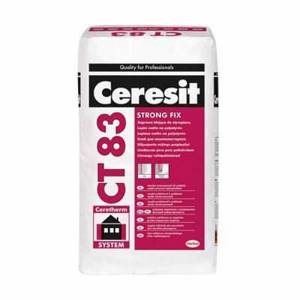
The first place in the ranking is occupied by a product from the German concern Henkel. It produces building materials and solutions under the Ceresit brand. The adhesive is designed for extreme conditions and has high adhesion. In reviews, users report that when checking the load-bearing capacity, the rupture always occurs in the material. The glue is prepared in 5 minutes by simply mixing with water. The solution allows steam to pass through, so moisture will not accumulate in the room. Excess traces of the mixture can be easily removed with water. Plastering the surface is allowed three days after installation. The substance can be used to create fire-resistant cuts, since it is not subject to combustion.
Our experts included the glue in the rating as the best for installing thick polystyrene foam slabs on the outside of the house facade. It is allowed to work with the mixture even at an outside temperature of 0 degrees, only then it is necessary to use warm water (+30 degrees) to prepare the glue. With this substance it will be possible to attach high-quality sheets of polystyrene foam, 200 mm thick, and strong winds will not tear them off.
Tytan Styro 753 GUN
Rating: 4.8

In second place in the ranking is adhesive in the form of polyurethane foam. It is produced in a cylinder with a capacity of 750 g. To apply it, construction guns are used, into which the cylinder is inserted upside down. With this technology, the process of installing polystyrene foam occurs 5 times faster than when diluting the solution and using trowels and graters. But the height of the foam does not exceed 5 mm, therefore, when installing polystyrene foam boards outside, where they will be exposed to wind and precipitation, additional fixation with dowels is required. But this can already be done 2 hours after gluing, which the craftsmen like in the reviews.
According to our experts, the product deserves a place in the ranking of the best for its cost-effectiveness. Unlike loose mixtures applied 50 mm wide along the perimeter of a sheet of polystyrene foam, glue in the form of a thin strip 10-15 mm wide is sufficient. Therefore, one balloon can fix polystyrene foam over an area of up to 8 m². It is also convenient to transport the sealant to the installation site due to the compact container.
Knauf Klebenspachtel
Rating: 4.7

The third place in the ranking is occupied by a product from a German manufacturer. The adhesive mixture is available in dry form and diluted with water to the desired consistency. The glue is supplied in packages of 25 kg. Has high adhesion to hard and soft materials. Can be used simultaneously for fixing expanded polystyrene and mineral wool (in areas protected from flame transfer). The solution is suitable for use inside the house or for finishing the facade. Buyers in the reviews like that the glue is suitable for any type of polystyrene foam, both regular and extruded. In the solution itself, air pores make up 13-15%, so the composition is durable and prevents it from falling off the wall.
We added the product to the rating because it can be machine applied to walls. For this purpose, G4 or Monojet pumps are used. This significantly increases productivity on large-area facades. Glue can be used to reinforce polystyrene foam, fixing a special mesh onto it for plaster mortars. The thermal conductivity of the binder itself is only slightly higher than foam plastic and is 0.047 W/m*K.
Prospectors Teploizol
Rating: 4.6
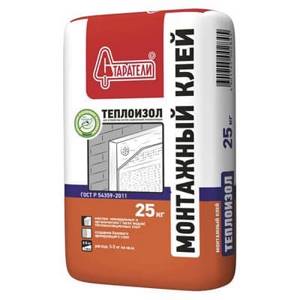
The fourth place in the rating is given to Russian glue for polystyrene foam, also produced in the form of a dry mixture. The package contains 25 kg of fine powder, diluted with water in a ratio of 250-300 ml per 1 kg. If you need to knead a large volume at once, then 6-7 liters of water per bag is enough. Glue can be used to fix foam of any thickness, as well as strengthen the surface for subsequent finishing. External use on facades is permitted. If repairs are not planned immediately, the product can be stored in its original packaging for up to 12 months.
Our experts included the glue in the rating for its reduced consumption, although this indicator depends on the skill of the master to apply the composition to the polystyrene foam board. With practice, you can reach a figure of 3-4 kg per 1 m² (with trowel teeth 1.0-1.2 cm), which is twice as economical as German brands. We also noted the viability of the solution for 3 hours. Thanks to this, wall finishing work can be carried out slowly and excess traces of glue can be easily removed with a wet rag.
Ceresit Express CT 84
Rating: 4.5
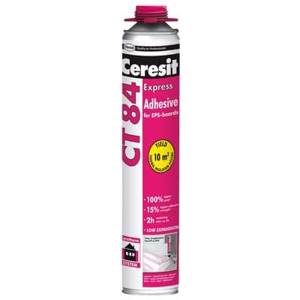
In fifth place in the ranking is another German product from the company Ceresit, but now in the form of polyurethane foam. The substance consists of polyurethane and flammable gas, squeezing the material out. The product can be used at air humidity up to 90%. The adhesion index to concrete is 0.3 MPa. But in terms of consumption, the glue is inferior to other participants in the rating - one cylinder is enough to cover about 6 m² with polystyrene foam. Buyers note in reviews the ease of use of the product - the glue is shaken for 30 seconds and screwed onto the gun. The application is carried out crosswise on the slab, as well as along the perimeter, with a strip width of 5-10 mm. You can adjust the insulation within 20 minutes. Excess traces can only be removed with solvent.
Our experts noted the product in the rating as the most resistant to low temperatures. Installation is allowed even at -10 degrees, which makes it possible to insulate the facade even in winter. Under such extreme construction conditions, curing takes 7-10 hours. In summer, the glue sets in 2 hours.
TechnoNIKOL Professional
Rating: 4.4
In sixth place in the ranking is a domestic product in the form of a sealant in a cylinder. The adhesive consists of one-component polyurethane foam and is suitable for all types of polystyrene foam. Installation can be performed at temperatures from 0 to +30 degrees. Experts in the reviews advise that after applying it to the slab, you need to wait a minute for the foam to expand a little, and then press the foam against the wall using a long profile. Once cured, the adhesive is resistant to water and mildew. The material has no aging effect. You can adjust the insulation within 20 minutes after fixing it in order to achieve minimal gaps between the slabs and ensure the evenness of the blocks.
Stages and nuances
Gluing foam plastic is carried out in several stages:
- Disconnect power from the electrical wiring.
- Clean the base from paint, whitewash, residual finishing materials and dirt.
- Remove irregularities deeper than 1 cm, that is, level the surface. If this is not done, the foam boards will break during installation.
- Treat the surface with a primer that contains antiseptics. This will improve adhesion and prevent the appearance of mold.
- Wait for the primer to dry.
- Foam boards are usually glued from a corner or lamp. During operation, the desired configuration is given using a mounting knife.
- If aerosol glue is used, insert the can into the gun and cut off the tip. Apply the composition to the underside of the foam board in strips along the edges (step back 2-4 cm from the very edge) and diagonally. It is also permissible to squeeze out the glue in dots - in the center and in the corners.
- Dilute the dry mixture with water until you obtain a homogeneous consistency and spread it on the stove with a small notched spatula, you should get a homogeneous thin layer. Another option is to apply glue pointwise around the perimeter and in the middle, spreading it evenly over the surface.
- Press the foam onto the base and hold for a few seconds. Remove excess glue with a damp cloth or even spatula.
- In the same way, glue the next plate end-to-end to the previous one. If a gap more than 2 mm wide has formed between them, fill it with foam or putty.
Types and brands of adhesives
For gluing are used:
- dry (powder, plaster-adhesive) and ready-made liquid mixtures;
- liquid Nails;
- adhesive foam (polyurethane);
- sealants.
Dry (powder)
These are plaster and adhesive mixtures. Packaged in large bags up to 30 kg per package. To prepare, the powder is diluted with water in the proportions specified in the instructions. The composition is based on the inclusion of cement, gypsum and polymer components. Externally, the powder is similar to putty or plaster, but the gluing result is more durable.
Suitable for indoor and outdoor use. Adhere well to concrete, wood and other substrates. Used as a seal for cracks, joints and seams. Consumption per 1 m2 ranges from one and a half to two kilograms.
For a reliable result, the walls are processed before gluing: they are cleaned of dirt, dust, dried and primed.
When diluting the powder with water, the liquid is added gradually in small quantities, and the water itself is constantly stirred. This will prevent lumps from forming. Application is possible in a continuous layer over the entire surface or in separate lines with a small distance between each.
Powder adhesives:
- Ceresit ST-83;
- Knauf Perlfix;
- Avangard-K;
- Primus;
- Volma";
- Armierungs-Gewebekleber.
Avangard-K allows gluing not only to concrete, but also to brick walls. Packaging 25 kg in one package. There is a frost-resistant option for the street.

Another Bergauf ISOFIX cement-sand mixture, which contains fillers and special additives, plasticizers. Apply a layer up to 3 mm thick. After mixing the solution, it can be used for one and a half hours, and the position of the EPS can be adjusted for a quarter of an hour. Can be used indoors and outdoors.
Polyurethane adhesive foam
Polyurethane adhesive in the form of foam (foam glue) connects all types of plastic, including polystyrene foam, with any substrate (OSB, metal, concrete, plaster, wood, aerated concrete and foam blocks). You can glue the foam together.
There are specialized formulations on the market. They are marked with an inscription on the packaging (for polystyrene foam).
The gluing plane is not important. Both horizontal and vertical surfaces are glued. The connection holds firmly both indoors and outdoors.
Installation is possible only with a construction gun, on which a cylinder is placed on top of the legs. The application technology is shown in the figure.
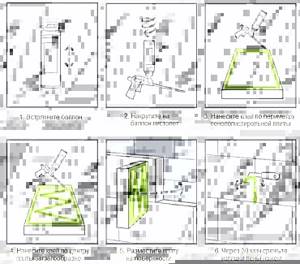
It is convenient to use foam adhesive. The work is done quickly. Has low consumption per sq. m. The cylinder is enough for 10-15 m2. Foam adhesives are resistant to moisture, do not freeze, and have high adhesion.
There is no need to prepare, the cylinder is ready to use. The maximum result of the coupling is evident after half an hour, while pressing the parts is enough for only 20 seconds.
Popular brands:
- Tytan Styro 753;
- Penosil;
- Ceresit CT-84 Express.
PVA
PVA is cheap, so it is often chosen for gluing extruded polystyrene foam (EPS). The reliability of the adhesion is not the highest, so it is more suitable for gluing crafts. It is better to give preference to specialized mixtures.
PVA fills voids in walls well. Additionally, foam plates are attached to dowels. Usually PVA is applied in two layers.
Suitable polyvinyl acetate adhesives include Moment Stolyar and PVA-MB.
- Moment Joiner. Universal composition for repair. Supplied in packages of different volumes, from 100 g to 30 kg. The drying time is fast and the seam is reliable. It does not destroy the structure of polystyrene.
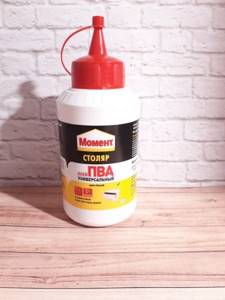
- PVA-MB.The composition contains special plasticizers that improve the quality of adhesion. The hardening time of the seam is longer than that of conventional PVA.
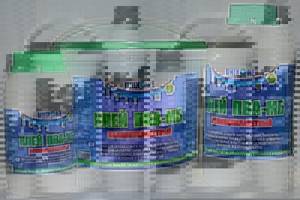
Polyurethane foam
An effective composition, but it has another purpose - sealing seams, cracks, strengthening concrete structures.
If you glue with polyurethane foam, the following consequences may occur:
- the foam after complete drying increases in volume, which can damage the foam and deform the entire structure;
- Foam can increase in volume in different ways, so voids form in some places and the thermal insulation properties decrease.
Polyurethane foam has a high consumption per square meter. m of surface, which increases the cost of gluing.
Recommendations for use:
- make sure that the foam is suitable for gluing foam and does not destroy it;
- install the polystyrene itself with a different composition;
- seal the joints with polyurethane foam;
- the foam dries quickly, so you need to work in the same way;
- Reducing consumption is possible with a glue gun.
Liquid Nails
They have a high price, but the gluing result is very high quality. The best choice would be specialized polyurethane adhesives.
Liquid nails have an optimal balance of qualities (ease of use, service life, adhesion). Polystyrene foam attaches perfectly to polystyrene foam, metal, plastic, concrete, wood, and other materials.
Professionals recommend gluing metal using a combination of liquid nails and polyurethane mixtures.
Increasing adhesion to the surface is achieved by preparing it: cleaning, degreasing, priming.
the high price causes the use of nails only on small bases.

The most popular composition is “Moment Montage”.
Main characteristics of polystyrene foam
Before gluing to a wooden, concrete or brick surface, as well as when deciding how to glue the foam together, you need to learn about the properties and characteristics of this material. Polystyrene foam, or, as it is otherwise called, expanded polystyrene, is formed as a result of foaming polymers. 98% of the material is gas, located in tiny cells with very thin walls.
Typically, foam boards are used as insulation for the walls of building facades and for finishing ceilings, walls, slopes indoors, in basements, on balconies and loggias. Expanded polystyrene can be glued to concrete, wood, metal, brick, plasterboard and gas silicate bases.
Main characteristics of polystyrene foam:
- excellent rigidity with low weight;
- long service life;
- excellent thermal insulation properties;
- resistance to moisture;
- expanded polystyrene with fire retardants does not burn;
- does not pollute the environment when disposed of after use;
- protects from wind if used outside the building;
- does not emit substances harmful to the human body; you can work with this material without protective equipment;
- does not dry out or shrink during long-term use, is resistant to temperature changes;
- It is easy to work with polystyrene foam - it is not difficult to cut, installation can be carried out using improvised means;
- mold fungi do not develop on it;
- inexpensive.
Polystyrene foam adhesive review
In this paragraph, we will consider popular construction adhesives for insulation from two manufacturers - Ceresit and Technokil. Since they were written about above, in this review we will consider only the advantages and disadvantages of both, as well as their prices.
Ceresit CT84 is a universal adhesive foam suitable for both the construction of new buildings with insulation and the insulation of existing ones. The best properties of this glue are its excellent adhesion to polystyrene foam and cement plastered walls, but they must first be degreased and cleaned of bitumen and dust. The glue has received excellent reviews among many builders due to its high moisture and frost resistance. The cost of one 0.75 liter foam cylinder is approximately 700-800 rubles.
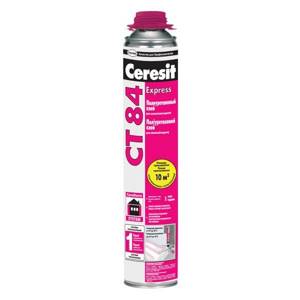
TechnoNIKOL is an excellent foam for insulating rooms. Designed for fastening slabs of extruded polystyrene foam and ordinary polystyrene foam to the base for thermal insulation of external and internal walls of a building, roofs, basements, foundations. Just like Ceresit, it is suitable for both houses under construction and already built ones. Can be used at temperatures from 0 to +40 °C. The price for one cylinder is about 700 rubles.

Option 1. Universal glue
Universal adhesives that grip different surfaces equally well include:
- Kleyberite-636;
- Moment Crystal;
- Emfikol-34012
Despite the fact that these adhesives are suitable in our case, professionals recommend using special adhesives for plastic, or liquid nails. We will talk about them further.

How to prepare glue
To prepare the glue, you need to have with you two buckets or any other container of similar sizes (one is needed for water, the other for glue), a special tool for mixing the glue or any available material suitable for this matter, and therefore the mixture itself for gluing polystyrene foam boards .
We will proceed from the calculation of 5 kilograms of glue; as an example, we take the mixture for gluing polystyrene foam boards.
This glue is also perfect for internal insulation.
So, now let's look at how this is done in more detail:
- We need to pour water into a bucket prepared in advance for this. Many will have a corresponding question - how much water is needed to prepare the adhesive mixture? To prepare bags of glue weighing 25 kilograms, only about 5-6 liters of water are needed. From this we can assume that 0.2-0.24 liters of water are consumed per 1 kilogram. Therefore, you need to pour approximately 1.2-1.3 liters of water into the bucket.
- Weigh 5 kilograms of dry glue mixture. For the first time, it is better to weigh it and pour it into a convenient container, so that later it will be more convenient to find the desired proportion using this container. Knowing how much glue is in the container, it will be easier for us to calculate the required amount for preparation. Afterwards, gradually add the dry glue mixture to the water and thoroughly mix the glue with water. The adhesive mixture must be mixed so that there are no lumps or various debris, otherwise the procedure will be of poor quality.
- Now you need to let the adhesive mixture sit for 5-10 minutes, but it is better not to keep it longer than this time, otherwise the adhesive mixture will begin to thicken. All this is necessary so that the remaining lumps completely dissolve.
- Mix the glue again just in case, since sometimes even after the above steps small lumps may remain.
How to prepare the surface
Before gluing the material, you need to thoroughly prepare the surface for gluing. It is on this that further fastening and the duration of fixation will depend.
Surface preparation consists of the following steps:
- Cleaning from dirt, dust and various substances.
- Leveling the surface. If there are unevenness or defects on the surface, they must be removed with special tools. If there are defects, the bond will be low;
How can I glue foam?
There are several proven adhesive compositions suitable for gluing foam parts to each other or to other materials. The choice of adhesive depends on the type of foam, as well as the desired strength of the seam after gluing.
For work, you should use adhesive compositions that do not contain organic solvents, since substances of this group destroy polystyrene.
List of adhesives for foam plastic:
- one-component polyurethane adhesive (“Titanium”, “Dragon”);
- dry adhesive mixtures (“Ceresit-CT83”);
- polyurethane foam;
- liquid foam (“Penosil”);
- polyvinyl acetate glue (PVA);
- hot melt glue (a heating gun is required to work with it);
- solvent-free liquid nails for latex-based polymer materials (LN-604 or Macroflex MF 190);
- two-component epoxy compositions (“Ceresit”);
- acrylic compositions (“Ultima”);
- bitumen mixtures (“Bitumast”).

How to glue foam parts together?
In practice, several means are used to glue foam or penoplex parts together. They differ in seam strength, polymerization period, and cost.
PVA glue is suitable in cases where a high-strength seam is not required, for example, when making foam plastic models or for children's creativity. It is very important to wait until it dries completely, which occurs within 24 hours.
Titan glue is several times stronger, so it can be used in construction and installation work for fixing penoplex blocks to the wall or to each other.
Other means for gluing foam plastic and penoplex: polyurethane foam “PUTECH”, “Slavia”, “Penosil Polystirol FixFoam”, as well as hot-melt adhesive heated with a glue gun. The advantage of these materials is quick drying, which allows you to shorten the period of fixation of fragments.
How to glue the material to paper or wood?
Sometimes you need to glue foam letters to paper or a wooden stand. A composition based on polyvinyl acetate is best suited for this. It is ideally compatible with wood, paper and foam. PVA glue dries slowly, so letters or other glued parts should not be touched during the day. Also, foam glues well to wood using wood glue. One of its options, casein glue, can be prepared independently from low-fat cottage cheese, guided by the material “How to make casein glue from cottage cheese with your own hands at home?”
Stages of work:
- sand the wood and foam in the area of future gluing for better adhesion;
- Clean the surfaces well from dust using a brush;
- apply glue around the perimeter of the part and in its center;
- combine the fragments and leave until completely dry;
- remove excess dried glue using a utility knife.
Bonding to metal
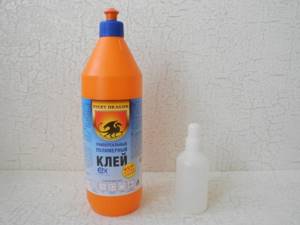
You can use expanded polystyrene to insulate a door or walls in a garage made of metal, as well as the inner surface of a roof made of corrugated sheets. Which fixation method is suitable for these purposes? Strong adhesion can be achieved using Dragon glue. This universal polymer glue costs about 70 rubles. for 500 ml. It is frost-resistant and does not contain flammable components. Before applying it, you should dry the surface thoroughly and make sure there is no condensation on it.
Foam blocks are smeared with glue and pressed against the metal for several minutes. This time is enough for the foam to stick to the metal, but complete stabilization of the adhesive composition occurs after about a day.
The gluing process will proceed faster if you use liquid nails. They set quickly, but the seam is less strong than when gluing with “Dragon”. This problem can be solved by using both adhesives at the same time. “Dragon” and liquid nails are applied pointwise to the insulation in different places. Due to the quick drying of liquid nails, the foam will quickly attach to the metal sheet, and it will not need to be fixed until the more durable “Dragon” has completely polymerized.
How to glue the fabric?
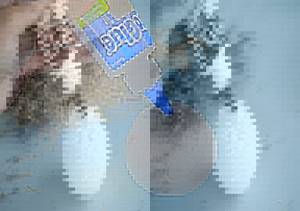
You can glue the fabric to the polystyrene foam or cover it with turns of twine or woolen thread using several compounds. PVA and hot melt adhesive are well suited for these purposes. Both materials, after drying, form a transparent and invisible seam. If immediate fixation is required, it is better to use hot glue. PVA takes longer to dry, about a day, but it allows you to achieve a stronger connection than hot glue.
Which adhesive is best for different insulation materials?
Foam plastic refers to a whole group of products made from foamed polymers. The common man associates this material with ordinary packaging. And for the builder it is an insulator, applicable under certain conditions.
In fact, foam is divided into three types:
- expanded polystyrene;
- polyurethane foam;
- polyvinyl chloride foam.
For each of them it is better to use a specific adhesive composition.
For expanded polystyrene
The simplest material is also easy to handle and install. Use bitumen masses or dry polymer mixtures to glue the foam. They reliably connect boards to different surfaces. Walls made of concrete or brick, gas blocks and plasterboard acquire additional waterproofing properties.
If we are talking about small products (baguettes, baseboards), then there is an option to secure them with liquid nails, PVA or silicone sealants. In this case, it is better to apply polystyrene foam glue point by point, and one pipe will be enough for the entire apartment.
For polyurethane foam
In this case, a similar rule works best. Adhesive based on polyurethane foam will qualitatively glue slabs to concrete, brick, plastic and metal surfaces. There is only one condition - the walls must be smooth and clean, all voids and cracks must be filled, and there must be no dust.
A special polyurethane-based wood glue is available for wooden surfaces.
Silicone-acrylic sealant will also cope with polyurethane insulation. You can also use cement-based facade adhesive.
For polyvinyl chloride foam
PVC is much more selective. All types of universal mixtures can fail. Only compositions made from PVC copolymers will help here. Therefore, read labels and instructions carefully.
For do-it-yourself polystyrene foam
There are situations when you create a composition yourself:
- An accident in which the roof began to leak or the sole of a shoe cracked.
- A person in life is a “do-it-yourselfer” and basically tries to do everything himself.
Adhesive for foam plastic is prepared from polystyrene foam. The base is crushed and filled with gasoline. The consistency is determined by eye, since there is no exact division into grams and milliliters.
Consumption per 1m2
Calculation of consumption per sq. m. is needed to determine the required amount of material to purchase. It is impossible to calculate the exact amount. This is influenced by factors:
- material, its density and ability to absorb;
- consumption of a specific type and brand of mixture.
The average data is shown in the table.
Type of compositionConsumption
| Dry | 500 gr. / m² |
| Bituminous | 800-1000 gr. / m² |
| Polyurethane | 1 cylinder per 8-10 m² |
What definitely won't work
There are a number of products on the construction market that are prohibited from being used in combination with expanded polystyrene. This is due to the fact that some components of binders have a negative effect on the structure of the fabric, significantly reducing their technical properties, or even destroying it. Therefore, before gluing the foam together, you should make sure that the selected connecting product does not contain the following components:
- solvents based on acetone or with the addition of this component;
- production elements consisting of oil or gas;
- alcohol in varying degrees of concentration.
If a mixture with an unknown composition was purchased, you can determine its compatibility with the slabs in a practical way. It is enough to apply the composition to a small area of insulation and see what happens within 30-40 minutes. If even the slightest damage is noticeable on the surface - soldered or welded cells, depression, darkening, etc. – the use of this product for gluing polystyrene foam is prohibited.
The composition should not contain flammable components, otherwise the cells will begin to collapse over time
If it is not possible to remember the list of undesirable components, remember one thing - do not buy glue that contains flammable components.
Useful tips
Several recommendations for choosing material and gluing technology:
- before purchasing, check the composition of the glue and make sure there are no components that destroy polystyrene;
- buy glue with a small reserve in case of possible overuse;
- pre-test the adhesive composition on an unnecessary piece of foam;
- for better adhesion, sand the surface of the polystyrene foam with sandpaper, walk over it with a needle roller or make notches;
- on large parts, glue should be applied around the perimeter and pointwise, in several places - along the inner surface;
- When gluing with polyurethane foam, leave the fragments under pressure until completely dry.
I hope the material presented is enough to glue foam in any situation. The next video is about how to use hot melt adhesive to join polystyrene foam.
Variety of adhesives
Before gluing the foam together, you need to decide on the type of glue. The most popular in the construction industry are:
- liquid adhesive compositions specialized for gluing polystyrene foam;
- dry powder glue;
- foam based on polyurethane foam;
- PVA;
- polyurethane foam;
- aerosol;
- liquid Nails.
In addition to the first option, all of the listed products are not limited to the field of gluing insulation based on polystyrene foam, so they can be used without any residue. When purchasing specialized glue, you need to make preliminary calculations to avoid unnecessary costs. On average, consumption is at least 200 g. per square meter of surface. Be sure to add 15-20% reserve.

For different application methods, the average consumption is 200-350 g. per square surface
To save money, you can lightly clean the foam surfaces of the sheets being fastened using zero-grade sandpaper.
VIDEO: Big test for adhesives - foam, reinforcing, polyurethane foam
How to glue polystyrene foam boards to the ceiling
Let's look at the process of installing extruded polystyrene insulation boards on a ceiling using the specialized Penoplex FASTFIX adhesive as an example.
The order of work is as follows:
- Surface preparation. The working surface should be cleaned of any contamination. To improve adhesion, slight moistening of the base is allowed;
- Preparing the glue. The cylinder should be positioned with the valve facing up and the mounting gun should be screwed onto it. This must be done by holding the pistol handle with one hand and screwing the cylinder with the other. During the screwing process, you should make sure that there are no people or animals in the direction where the gun barrel is pointing. After the cylinder is securely secured in the gun, it should be shaken vigorously and placed upside down;
- Applying glue. Penoplex FASTFIX glue is applied directly to the insulation board in thin strips parallel to the edges, 2-3 centimeters away from each edge. One strip of glue is applied in the middle of the slab, parallel to its long side. The amount of foam coming out of the cylinder and the intensity of its release should be regulated by the trigger of the gun;
- Gluing the insulation board to the ceiling. After applying the foam to the insulating panel, wait a technological pause (about 2-3 minutes), then press the slab to the ceiling surface and fix it for 15-20 seconds. During the first 5 minutes, the position of the attached polystyrene foam boards can be adjusted.
- The slabs must be mounted close to one another with the seams spaced apart. The gap between the panels should not exceed two millimeters. For greater installation reliability, it is recommended to use additional fastening accessories (dowels). Excess foam after it has completely dried is cut off with a sharp knife.
The glue sets within 5-10 minutes, but complete drying occurs only after 24 hours.
In the cold season, before applying the glue, it is recommended to warm the container in a bucket of warm water (25-30 degrees) or keep it indoors at room temperature for several hours.
VIDEO REVIEW As for the consumption of adhesive for polystyrene foam , one Penoplex FASTFIX cylinder (costs about 350 rubles) is enough to insulate 6-10 square meters of walls.
What is the best way to insulate with polystyrene foam - inside or outside?
If you go to any construction forum and read topics about insulation from the inside and outside, you can break your head. Some say that insulation can only be done from the outside, others say that insulation from the inside does not bode well.
Now I will try to explain in detail why it is still better to insulate walls from the outside. To do this, I drew a diagram of the insulation of the wall from different sides and the effect of adverse atmospheric influences on it.
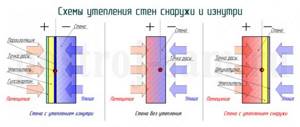
The dew point is the point where water vapor in the air turns into water droplets. In other words, this is the place where condensation begins to collect.
Let’s say it’s -25 outside, and +20 in the house. In the case of insulation from the inside, the wall will be almost completely absorbed by negative temperature, and the dew point will move closer to the insulation, i.e. inside the room. Naturally, condensation will begin to appear between the insulation and the wall, which will be absorbed by it, will not have time to dry and the wall will always be wet.
And from the school physics course we know that at subzero temperatures, water freezes, turning into ice, thereby gradually destroying the wall itself.
If we insulate the wall from the outside, then we will move the dew point closer to the street, which will allow home heat to protect the wall from negative influences. In this case, the wall will be much warmer and almost dry.
There are times when it is necessary to insulate walls with polystyrene foam, but for some reason this cannot be done outside. In this case, following the technology, you can insulate the wall from the inside of the house.
PPS as insulation
Both extruded and foamed polystyrene foam (both types of material are simply called polystyrene foam) are currently perhaps the most popular insulation for walls and ceilings in buildings for various purposes.
Extruded PPS is denser and stronger, so it is more appropriate to insulate buildings from the outside. It is better to use foam material to insulate internal surfaces that are not subject to mechanical stress. Sometimes external walls are also lined with this type of foam, but it must be covered with a protective cladding (wall insulation done in this way can be much more expensive).
Correct fastening of polystyrene foam to the facade using dowels.
The methods for attaching insulation to brick both outside and inside the house are almost the same. The main thing is that a material with suitable environmental safety characteristics is selected for them. The thickness of the purchased PPS slabs should depend on the thickness of the brickwork and climatic conditions in the region where the house is located.
